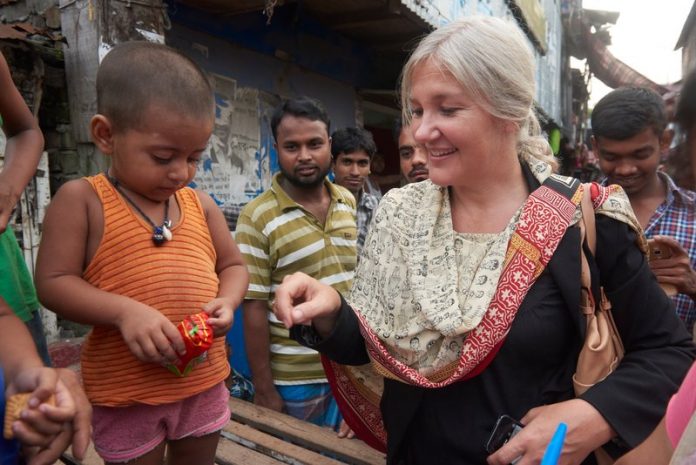
Gwen Carleton, Communication Manager for the World Diabetes Foundation, explores how diabetes still isn’t prioritised by governments and in global development – despite the clear business case for doing so – and hopes that 2018 will mark a turning point
Imagine your community is facing an epidemic. Left unaddressed, this epidemic would prematurely cripple and kill millions of your citizens, many of them bread-winners in their most productive years, and leave future generations at high risk of developing the disease. Imagine that information, medical equipment and medication to treat the disease were widely available, much of it available at a low cost and that addressing this threat would not only save lives but offer economic benefits to boot. You would tackle and defeat the epidemic, right?
Unfortunately, when the hypothetical becomes real, the outcome is different. Diabetes is an epidemic that currently affects 425 million people worldwide. About 5 million people died from diabetes in 2017 – that is significantly more deaths than from HIV/AIDS, tuberculosis and malaria combined. About 79% of people with diabetes live in low- and middle-income countries, which can least afford the devastating direct and indirect costs of the disease1. Annual GDP losses due to diabetes and other non-communicable diseases range from 3.5% – 5.9% and the amount it will have cost developing countries between 2011 and 2025 will be more than $7 trillion. That’s equivalent to the combined GDP of France, Spain and Germany in 20172.
Yet governments continue to under-prioritise non-communicable diseases in general and diabetes in particular. The global development community under-prioritises them as well: only about $475 million (1.3%) of development aid for health was dedicated to NCDs in 20153. HIV/AIDs received eight times that amount, reflecting a long-term prioritisation of communicable diseases over NCDs.
A turning point
Since 2002, the World Diabetes Foundation has worked to alleviate human suffering related to diabetes and its complications among those least able to withstand the burden of the disease. We do this through partnerships. Civil society, academia and other non-state actors identify needs in their communities and apply to us for funding and technical support to meet them. This has resulted in more than 500 projects that have provided care to more than seven million people and reached millions more through screening, educational and prevention efforts.
WDF is still one of the few funding mechanisms dedicated specifically to preventing and treating diabetes in the developing world. Our combined efforts are making a difference. We bring our partners together whenever possible to share their learnings and amplify their voices. But our impact is not nearly enough to meet the global need.
Why aren’t NCDs in general and diabetes in particular, at the top of every health agenda? The business case is clear: the return on investment in NCDs significantly outweighs the costs. A 2018 WHO report4 shows that for every dollar invested in NCDs, there will be a return to society of at least $7 in increased employment, productivity and longer life.
The answer, according to the WHO, is a lack of political will, commitment, capacity, action and accountability5. But 2018 may well be remembered as a turning point. Over the past year, a wide variety of voices have united in urging governments to make more concrete, tangible commitments to defeating NCDs, as part of the build-up to the Third UN High-Level Meeting on NCDs which took place on 27 September. This gathering gave high-level decision-makers the chance to go beyond generic language and make concrete, tangible commitments on NCDs. We hope that they take full advantage of this opportunity. Nothing less than millions of lives are at stake.
References
1 IDF Diabetes Atlas, Eighth Edition, 2017.
2 From Burden to “Best Buys”: Reducing the Economic Impact of Non-Communicable Diseases in Low- and Middle-Income Countries, WHO, 2011.
3 Dieleman et al. Development assistance for health: past trends, associations, and the future international financial flows for health. The Lancet, April 2016.
4 Saving lives, spending less: a strategic response to NCDs, WHO, May 2018 Time to deliver: report of the WHO Independent High-Level Commission on Noncommunicable Diseases, WHO, 2018.
5 Time to deliver:report of the WHO Independent High-Level Commission on Noncommunicable Diseases, WHO, 2018.
Gwen Carleton
Communication Manager
World Diabetes Foundation










